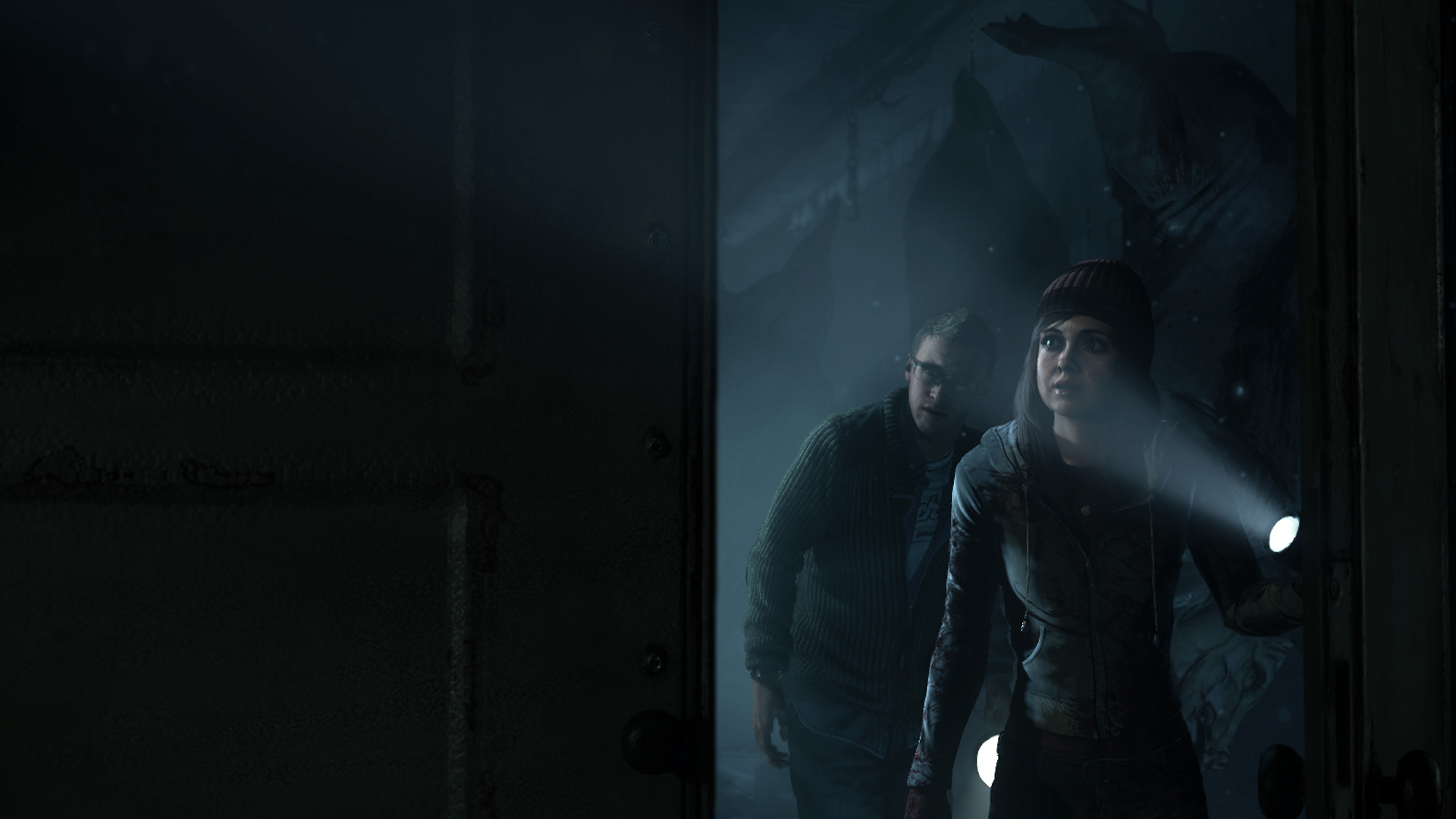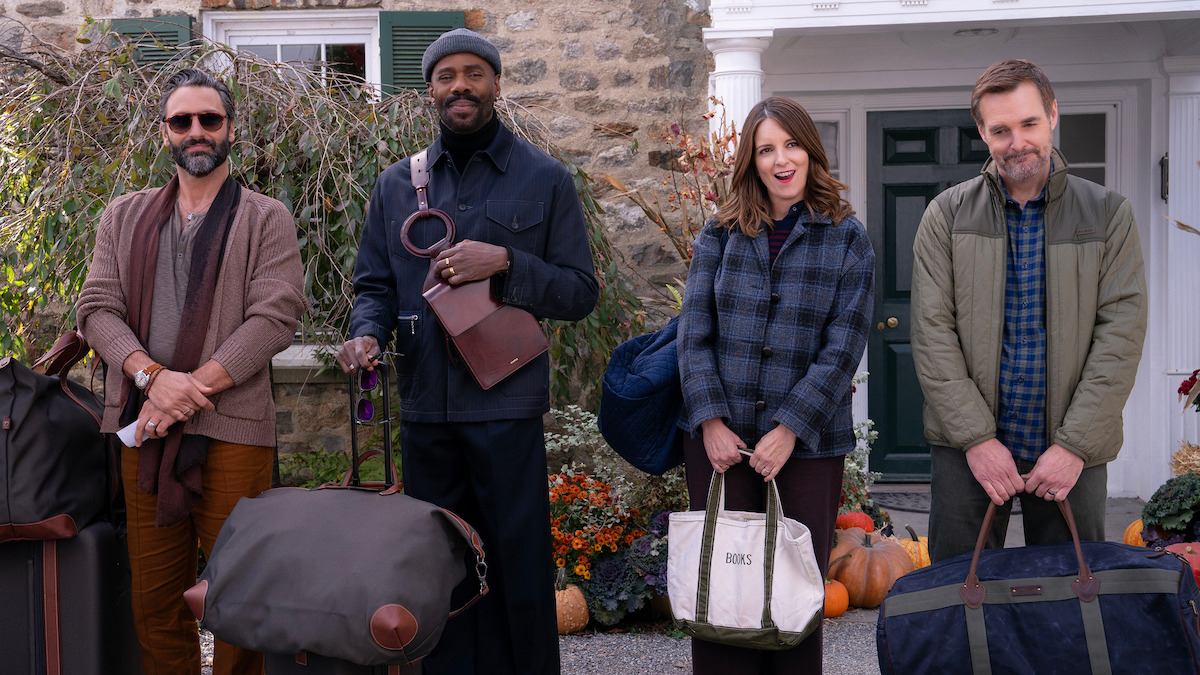Tom's Guide Verdict
Until Dawn is a B-movie delight for horror fans, thanks to creative narrative mechanics and excellent production values.
Pros
- +
Great atmosphere
- +
Interesting narrative
- +
Meaningful story choices
- +
Peter Stormare is pure joy in human form
Cons
- -
Not much traditional gameplay
- -
Some characters more interesting than others
Why you can trust Tom's Guide

Let's face an uncomfortable truth: Slasher films usually work because we, as viewers, don't mind seeing obnoxious teenagers get butchered like livestock. If the teens are sufficiently annoying, viewers usually start rooting for the killer. Until Dawn ($60) is a PlayStation 4-exclusive horror title from Supermassive Games that weaves together every cliché in the slasher-movie genre into something fresh and enjoyable.
Until Dawn may not be as terrifying as Halloween, as clever as Cabin in the Woods or as iconic as Nightmare on Elm Street. But it's worth at least one playthrough for horror fans thanks to creative narrative mechanics and excellent production values.

Gameplay
Until Dawn casts the player as one of eight teenagers (you switch among them) who travel to a remote mountain cabin for a weekend of fun. They find themselves stalked by a mysterious killer, as well as menaced by the snowy environment and torn apart by their own personal dramas. In order to survive the night, you'll play as each character as he or she explores the spooky cabins, abandoned mineshafts and snowy hills of the remote retreat.
MORE: Best PS4 Games
There's not much traditional gameplay in Until Dawn, so action junkies will have to get their fixes elsewhere. Quick-time events and the occasional shooting section make up the most traditional gameplay elements. Every once in a while, a button prompt will appear on screen, and you'll have to do something — press a sequence of buttons, rotate the control sticks or even keep your controller very still — as quickly and accurately as possible. Until Dawn keeps the frequency of these events to a respectable minimum, which helps make them feel exciting and tense rather than monotonous.
Likewise, the quick-time events sometimes involve throwing objects or shooting at targets. Rather than implement a full combat system, you'll occasionally be prompted to aim at a target with the analog sticks and press a button to fire. It's a little gimmicky, but it's tense, and a tutorial that stages a snowball fight between two of the main characters is a particularly clever way to introduce the concept.
Until Dawn is not a survival-horror game such as Resident Evil or Alien: Isolation. Instead, it's just a horror game, and as such, combat, item hunting and puzzle solving take a back seat to just generally interacting with the world and characters around you. Gameplay consists of walking around (usually not very quickly, and with fairly clunky controls) and interacting with items like photographs, gates and water boilers to gather information and solve simple puzzles. Of particular note are the Totems, small collectibles that give players a glimpse into possible grim futures for the teens.

The Butterfly Effect
I say "possible," because the hallmark of Until Dawn's gameplay is the ability to change how the story plays out, with no do-overs and no alternate-save files. The game's unique Butterfly Effect system lets you know whenever you make a story-altering decision by showing a group of butterflies fluttering across the screen. This is not the scariest thing to see in a horror title, but it does a good job of communicating just how many decisions you can control.
Will you jump into the mine shaft to save your girlfriend, or simply throw her your flashlight? Does your friend need reassurance, or a casual joke, when he's feeling down? Do you take the quick and dangerous path through the woods, or the long and safe one — and how does your choice change when there's a deranged killer hot on your heels? Until Dawn lets you make all of these decisions, and as such, which character lives and which dies by the end of the game is wholly up to you.
One potential downside of this system is that there's no reliable way to tell which choices will end up saving your characters or killing them. But that's actually part of the fun. As in a horror movie, the characters are just annoying and likable enough that you'd be equally happy to see them narrowly avoid misfortune or get carved up by a psychopath. Similarly, the game would not be much fun if one choice were always clearly the "right" one for survival.
The trick to enjoying Until Dawn is to treat it like an interactive movie rather than as a traditional game. You don't get any extra points or rewards if you save everyone, and doing so isn't really the point. The story plays out based on your choices, for good or ill, and there's no way to predict how until you reach your second playthrough.
I would be remiss if I didn't mention the brilliant interlude sections, in which you (it's not clear which character you're playing as, at least not at first) sit across from a delightfully macabre psychiatrist, played by the incomparable actor Peter Stormare. The psychiatrist grills you about what you find scary, and these sessions help inform which frights the game will throw your way. It's admittedly been done before, in games like Silent Hill: Shattered Memories, but Stormare brings such vivacity to the role, it's hard to not look forward to the 5-minute breathers with him.

Story
Stop me if you've heard this one before: A year after a tragic accident, a group of eight teens (some friendly and some adversarial) gather at a remote winter cabin to have some fun, play some pranks, engage in premarital sex and run for their lives from a lunatic with a knife.
But wait, there's more! The cabin is also within walking distance of ancient Indian lands, an abandoned sanitarium, a disused mine shaft and a small town full of distrustful locals. Now the teens have one night to survive the ordeal and figure out who the killer is, and why he or she is so intent on getting rid of them.
At first glance, Until Dawn feels like the horror-cliché shop was having a going-out-of-business sale and Supermassive Games bought up every last thing it could. After all, a single horror chestnut will last a two-hour movie, but not a 10-hour game, so why not just use them all?
While Until Dawn is not exactly a satire, it does present itself with a sly wink and nod to the horror crowd, which will doubtless recognize the game's many cinematic influences from great and schlocky films alike. There's a sense of "we know it's cheesy, but just roll with it" to the proceedings. Whether you're playing horror-movie-trope bingo, or listening to the over-the-top dialogue, riddled with profanity and sexual innuendo at every turn, Until Dawn skirts a very fine line between fun and scary, and pulls it off very capably.
My only big issue with Until Dawn's narrative is that eight characters are a lot to follow. Granted, it's helpful to have some expendable characters to up the body count, but a lot of the characters are not terribly different or memorable, even though each one gets his or her own collection of descriptors when we first meet them ("intelligent," "persuasive," "courageous" and so forth, which is a perfect example of telling, not showing).
MORE: PS4 vs. Xbox One: Which Console Is Right for You?
Matt is athletic and passive; Mike (acted and voiced by Brett Dalton from Agents of S.H.I.E.L.D.) is a jerk; Sam (Hayden Panettiere) is playful and smart. But I wasn't especially distraught at the prospect of seeing any of them meet gruesome ends (which might be the point).

Graphics and Art
Until Dawn is a gorgeous game, and its motion-capture fidelity is second to none. Every character looks realistic and expressive, and the voice work matches their facial expressions perfectly. Peter Stormare psychoanalyzes with insidious glee; Brett Dalton shows that he can act like a convincing buffoon in any medium, and Hayden Panettiere screams and emotes with the best of them. In the environments, from softly falling snow, to creaky cable cars, to ordinary bedrooms that look terrifying in the dark, Until Dawn takes full advantage of the PS4's hardware with barely any weak spots to speak of.

Sound and Music
Horror movies aren't generally very scary without excellent music and sound design, and Until Dawn takes this lesson to heart. Strings play softly and crescendos mount at just the right moments. When the characters ask, "Did you hear that?" your heart can't help but race a little bit, because you did, and it sounded as terrifying as the teens suggest. The voice acting is likewise inspired and infused with just enough B-movie campiness to give a sense that you can be scared, but not too scared.

Bottom Line
Until Dawn isn't for everyone. Those with itchy trigger fingers or a penchant for truly terrifying nightmare fuel will have to stick with games like Resident Evil and Outlast, respectively. However, if you've ever watched a slasher film and thought, "I could live through that," this is your chance to put your theory to the test.
At its core, Until Dawn has a lot of heart, and more than enough graphical and narrative chops to back it up. The gameplay can be a little thin, but the overall experience is arguably even more fun than simply sitting back and watching a movie. Just remember that before you send all eight characters off to their gory graves, you once were (and maybe still are) a loudmouthed teenager, too, and probably didn't deserve to get gutted like a fish.
Honorof is a senior writer for Tom's Guide. Contact him at mhonorof@tomsguide.com. Follow him @marshallhonorof. Follow us @tomsguide, on Facebook and on Google+.
Marshall Honorof is a senior editor for Tom's Guide, overseeing the site's coverage of gaming hardware and software. He comes from a science writing background, having studied paleomammalogy, biological anthropology, and the history of science and technology. After hours, you can find him practicing taekwondo or doing deep dives on classic sci-fi.

